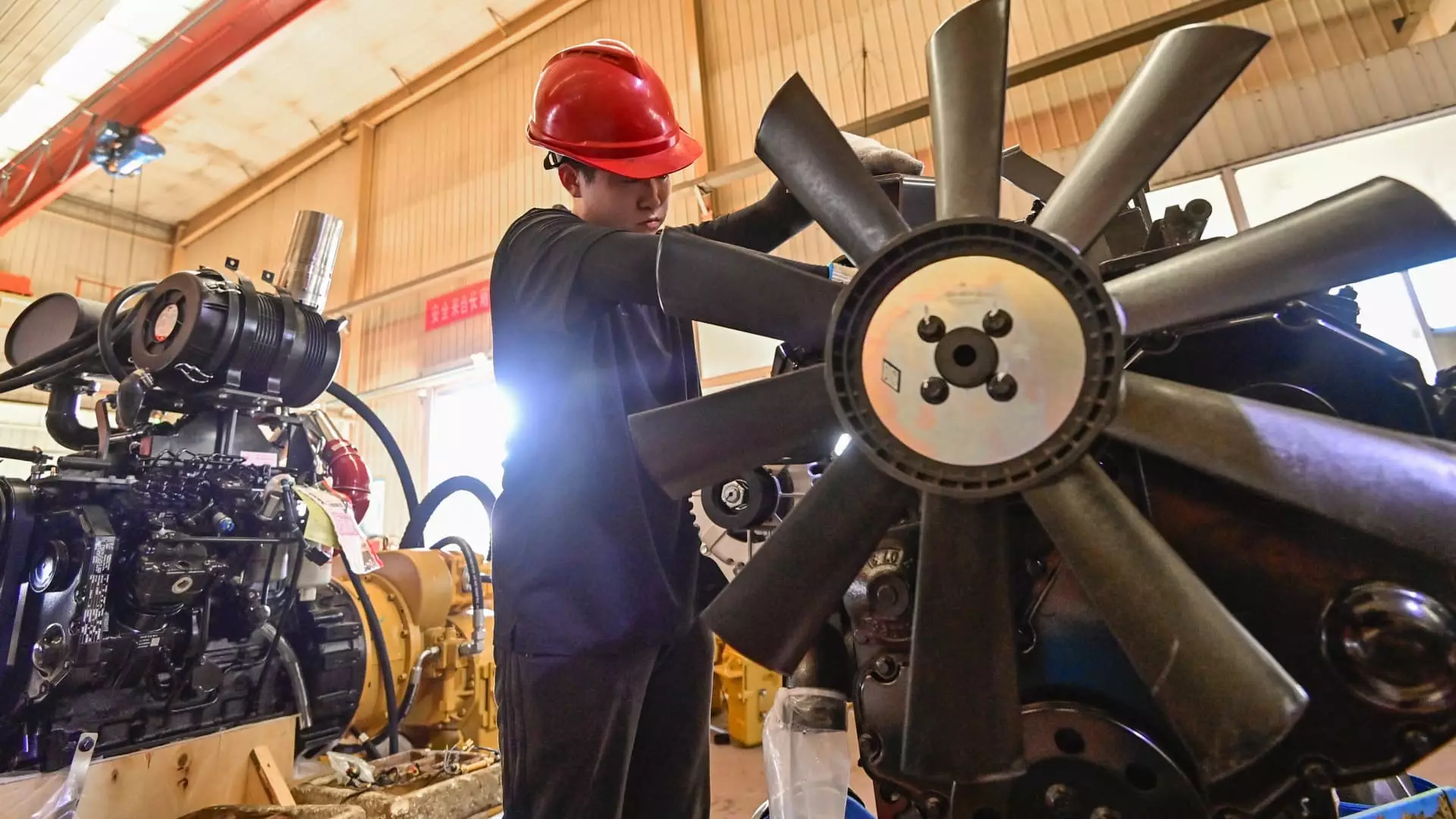China’s economic landscape has experienced significant fluctuations, particularly in the manufacturing sector, which is a cornerstone of its economic performance. Recently, data from the Caixin/S&P Global manufacturing purchasing manager’s index (PMI) revealed a noteworthy turnaround in factory activity for smaller manufacturers in October. This resurgence into expansion, reflected in a PMI of 50.3—up from September’s 49.3—signifies a critical moment for policymakers and economists alike, particularly against the backdrop of ongoing challenges such as tepid domestic consumption and a struggling property market.
The PMI serves as a vital economic indicator, offering insights into the health of the manufacturing sector. A reading above 50 indicates expansion, while anything below that point suggests contraction. The recent reading of 50.3 for October is particularly significant as it surpasses the expectations set by analysts, who forecasted a more modest 49.7. The uplift from September’s figures demonstrates a potential recovery amid a challenging economic environment, where both supply and demand have shown signs of improvement.
Wang Zhe, a senior economist at Caixin Insight Group, attributed this month’s positive results to an overall market recovery. The increase in new orders and productive stability presents a promising glimpse into the resilience of the sector. However, a critical analysis must recognize that while these numbers are encouraging, they do not paint a complete picture of the underlying economic health.
Despite the positive trends in domestic new orders, the ongoing decline in export orders remains a concerning aspect that needs to be addressed. The Caixin data notes that the rate of decline in export orders has tapered, but an essential question arises: why do exports continue to falter? The slow recovery in global demand, compounded by geopolitical tensions and increased protectionist policies, suggests a precarious outlook for China’s export-driven manufacturers.
Economists such as Gary Ng from Natixis emphasize the need to consider external factors that could hinder sustained growth. The possibility of external pressures, such as the upcoming U.S. elections, may influence U.S.-China trade relations, further complicating the export landscape. Thus, while domestic markets may show recovery signs, external challenges loom large.
China’s government has been proactive in its approach to economic stimulus, making strategic adjustments to monetary policy that aim to inject liquidity into the market. The People’s Bank of China (PBoC) recently implemented a reduction in the reserve requirement ratio (RRR) and adjusted interest rates. These measures are designed to bolster banks’ lending capabilities and encourage economic activity.
Andy Maynard from China Renaissance describes these adjustments as initial steps that could lead to more significant recoveries in the manufacturing sector. However, it is crucial to evaluate the long-term effectiveness of such stimulus. The sector’s ability to stabilize and flourish relies not only on government intervention but also on the fundamental dynamics of consumption and investment within the economy.
As China’s parliament prepares to meet next week, expectations are high concerning further announcements related to fiscal stimulus measures. The need for a robust and cohesive action plan is vital to ensure that the manufacturing sector can maintain the recent momentum.
While there is cautious optimism regarding the recovery trajectory, uncertainties linger. Issues such as internal competition and historical inefficiencies remain significant barriers that manufacturers must navigate. The challenge will be to balance government stimulus with sustainable practices that can facilitate long-term growth.
China’s October PMI results suggest encouraging signs for the manufacturing sector, particularly among smaller firms. However, stakeholders should remain vigilant and critically assess both domestic and international challenges that impact growth. Moving forward, the focus must be on creating resilient strategies that will safeguard against volatility while ensuring a balanced approach to economic recovery.


Leave a Reply